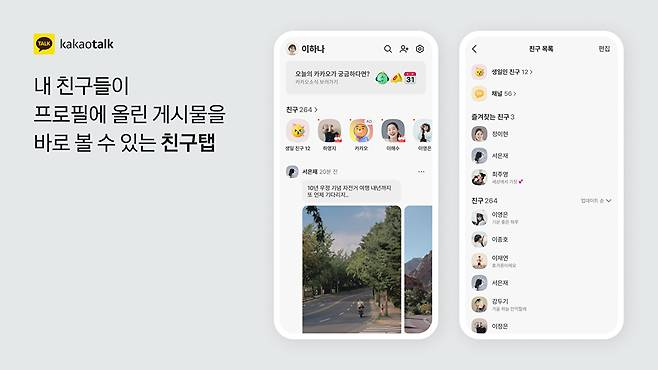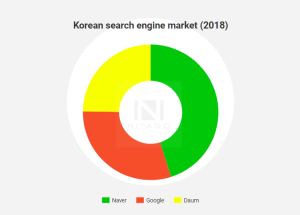In late September 2025, KakaoTalk, South Korea’s ubiquitous messaging app, underwent its first major redesign in 15 years. Aimed at transforming the “national messenger” into a super app blending chat, social feeds, short-form videos, and AI, the update sparked immediate uproar. Users flooded app stores with 1-star reviews, stock prices plunged, and alternatives like NateOn surged in popularity. Yet amid the chaos, Kakao presses on with ChatGPT integration by month’s end. This post explores the update’s highs and lows, the rival resurgence, and the AI lifeline—highlighting how one app’s pivot tests user loyalty in a crowded digital space.

The Update: From Messenger to Social Feed—and Instant Regret
KakaoTalk’s revamp kicked off on September 23 at the if(kakao)25 developer conference. The “Friends” tab, once a simple contact list, morphed into an Instagram-style feed. Scroll through grids of profile pics, status updates, and posts from colleagues or clients—complete with likes and comments. The “Now” tab introduced short-form videos, algorithm-driven recommendations, and community chats, tying into e-commerce via affiliate links and Kakao’s gifting service. Chat features got tweaks too: folder organization for up to 10 categories (100 rooms each), message edits, and upcoming unread summaries via AI.
Kakao’s pitch? A “stay-and-play” ecosystem where users chat, consume content, shop, and share without leaving the app. Creators get tools like video editors and analytics, plus AI-assisted clip generation using Kakao’s Kanana model. On-device AI promises privacy—no data leaves your phone—while suggesting reminders like “Buy chicken for your friend’s birthday Saturday?”
But execution hit snags. Users, many treating KakaoTalk as a workhorse for quick contacts, recoiled at forced social exposure. Imagine a boss’s selfie dominating your screen or a client’s couple photo popping up mid-deal. “It’s like a phonebook turned tabloid,” one reviewer griped. Short-form feeds drew fire for potential distractions, echoing global TikTok critiques. App ratings tanked to 1.0 on Google Play by October 2; automatic updates couldn’t be stopped fast enough. Internal leaks revealed pushback from developers, with CPO Hong Min-taek overriding concerns to combat stagnation. By September 29, Kakao conceded: Q4 rollback to the classic Friends list, with feeds shunted to a separate “News” tab.
For marketers, though, silver linings emerge. Ad slots multiply in feeds and videos, with Q2 profile-view ads up 2x and business messages rising 16%. Early creator rewards hint at untapped reach—if users adapt.
Rivals Rebound: NateOn’s Surprise Comeback
The backlash fueled a mini-exodus. Data firm Sensor Tower reported NateOn, once Korea’s PC messaging king from 2002, spiking 12x in downloads on September 27—hitting No. 1 in Apple’s social networking category and No. 5 overall. Google Play’s communication ranks jumped from 55th to 7th. Daily installs soared from 519 to 22,447, a 43-fold leap per Mobile Index. Line followed suit, up 4x to 36,522 installs.
Why NateOn? It clings to basics: a clean contact-list UI, no intrusive feeds or ads, ideal for office pros ditching Kakao’s “forced sharing.” Blind community posts buzzed: “NateOn for work—finally, no distractions.” A 37-year-old Seoul worker fumed, “Kakao’s update is peak arrogance; I’d switch permanently if contacts transferred easily.” Critics dubbed Kakao execs “Jobs syndrome”—Steve Jobs-like hubris ignoring user research.
Experts call it a wake-up: KakaoTalk thrives on real-life ties, not anonymous scrolls. The surge may fade—cross-app chatting barriers persist—but it spotlights demand for purpose-built messengers. NateOn’s parent, SK Communications, seized the moment with its first user guide in 23 years, touting simplicity. As one analyst put it, “Kakao bet on ads over empathy; now rivals prove basics win.”
AI Anchor: ChatGPT Lands in KakaoTalk
Pressing ahead, Kakao integrates OpenAI’s ChatGPT by late October—no extra app needed. Tap an icon in the chat tab for GPT-5-powered queries: draft docs, summarize threads, or Q&A mid-convo. Results paste directly into chats. The “Kakao Agent” links it to ecosystem tools—ask for directions, and KakaoMap opens seamlessly; hum a tune for Melon playlists; shop via gifting without tab-switching.
Kanana bolsters this: on-device smarts for proactive nudges (e.g., reservation reminders from chat context) and voice call transcription with searchable summaries. VoiceTalk gets AI recaps, bypassing carrier tie-ins. Kakao touts Kanana’s Korean fluency as a edge, lightweight for mobile without cloud leaks.
Skeptics question timing—will AI salvage trust amid UI scars? Early tests suggest yes for power users: natural, embedded help turns chats into workflows. As Kakao CEO Jeong Shin-a framed it at if(kakao), “Chats become windows of possibility.” If it sticks, KakaoTalk evolves from feed fiasco to AI hub.
KakaoTalk’s saga underscores a timeless tech truth: innovate boldly, but listen harder. The update’s stumbles boosted rivals and dented shares, yet AI infusions could reclaim ground. For users, it’s a reminder—your daily app isn’t invincible. Watch Q4: rollback plus ChatGPT might just blend the best of both worlds, or cement the divide. Either way, messaging just got messier—and more interesting.





